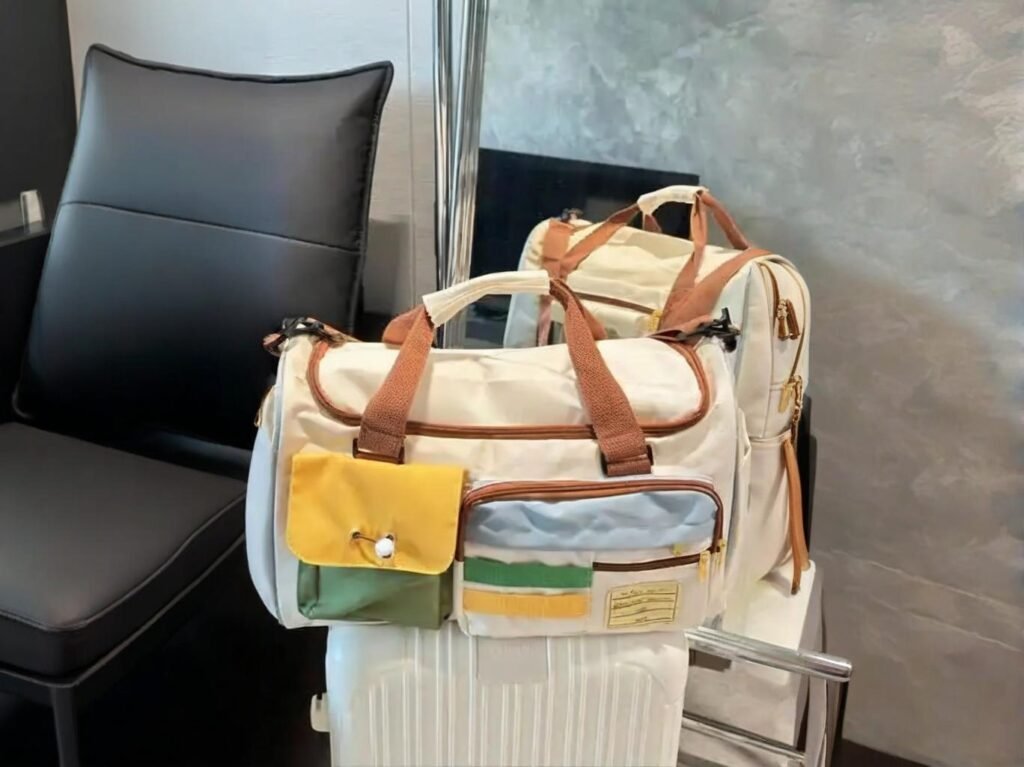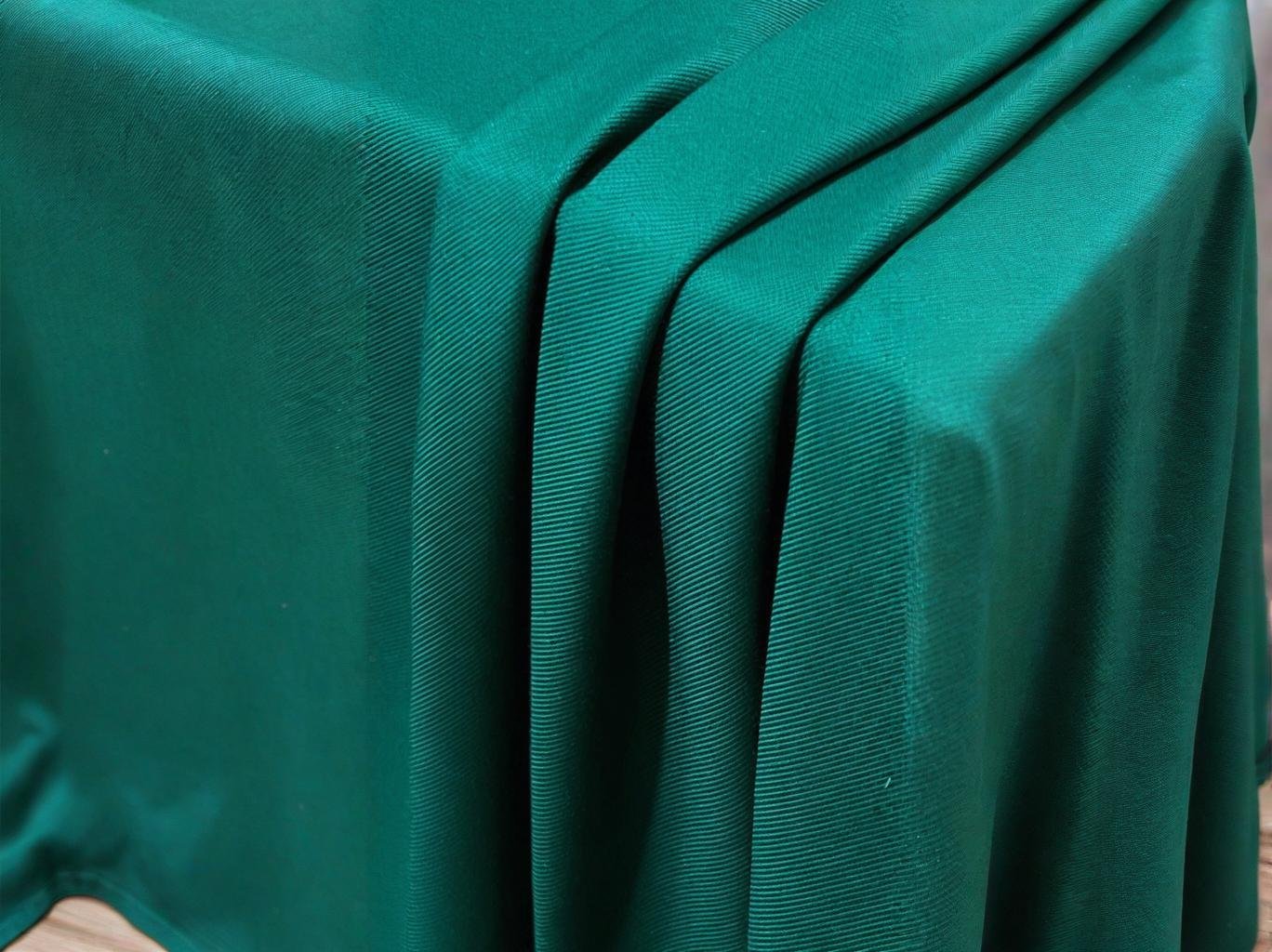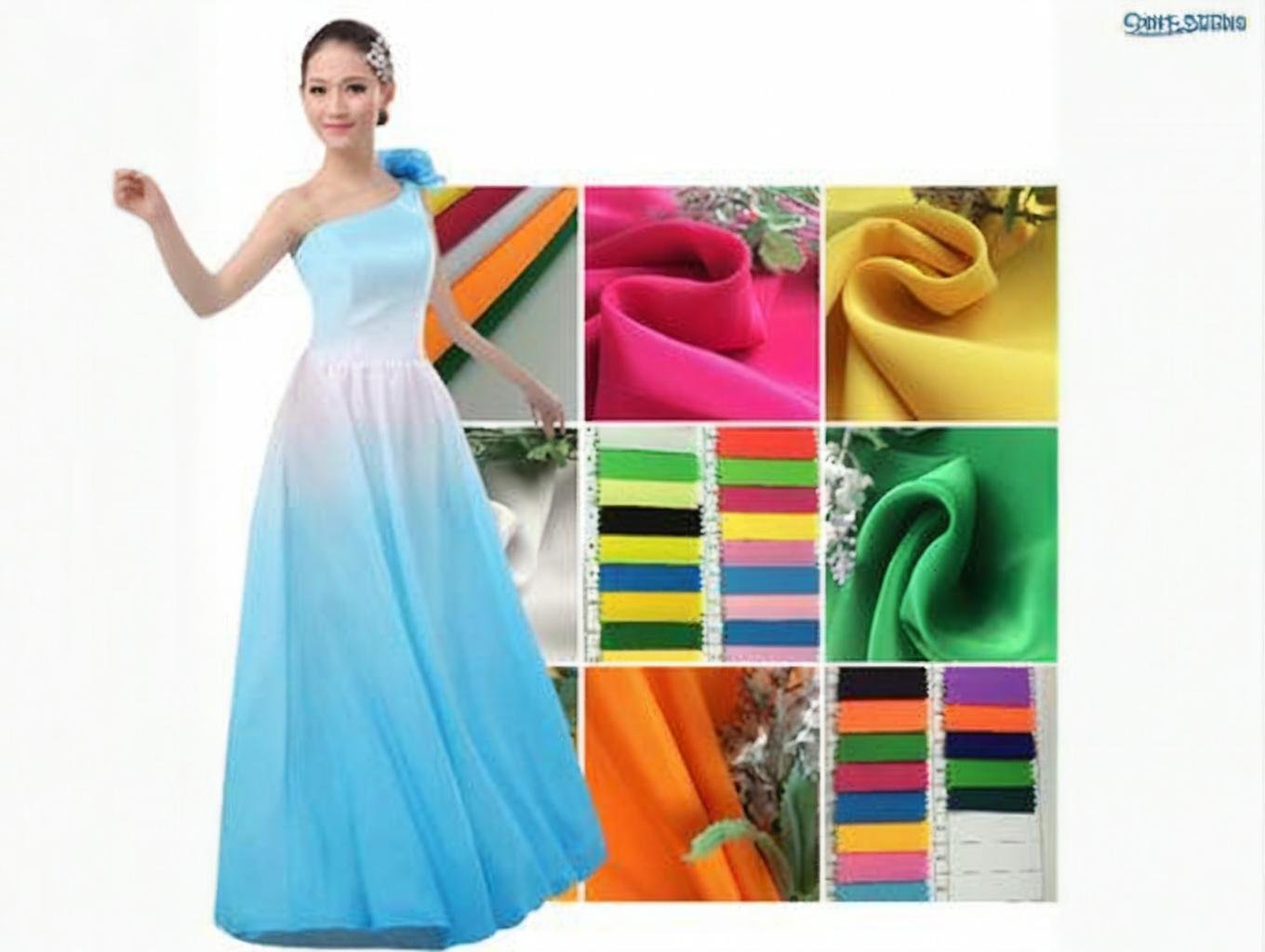Is Oxford Cloth Better Than Polyester?

Oxford cloth and polyester are two of the most widely used materials in today’s textile market. From uniforms and bags to tents and outerwear, they often compete for the same roles—yet many buyers still wonder which fabric is truly better. Is Oxford cloth softer? Is polyester stronger? Which one holds up better over time, and which makes sense from a cost and brand-positioning standpoint?
Oxford cloth is not inherently better or worse than polyester—it depends on the fiber composition of the Oxford (cotton, poly-cotton, nylon), the intended use, and what performance metrics matter most. For comfort and breathability, Oxford wins. For cost-efficiency and weather resistance, polyester often leads.
Understanding the difference between fiber and weave is key. Polyester is a synthetic fiber. Oxford is a type of weave that can be made from polyester, cotton, or a blend. That distinction matters, especially when sourcing for quality, finish, or compliance.
Let’s start by breaking down the structural and fiber differences between these two options—because choosing the right one could significantly impact your product’s cost, comfort, and market appeal.
1. What Is the Difference Between Oxford Cloth and Polyester in Terms of Fiber and Fabric Structure?
Oxford cloth refers to a basket weave fabric structure—not a fiber type. It can be made from various materials such as cotton, poly-cotton, polyester, or nylon. Polyester, on the other hand, is a synthetic fiber, which can be woven into many structures including Oxford.
The main difference is that Oxford cloth is a weave type, while polyester is a fiber. Oxford can be made with polyester yarns, cotton, or blends—making the two not mutually exclusive.
Composition vs Construction
a. Definition Comparison Table
| Term | Type | Definition | Example Applications |
|---|---|---|---|
| Polyester | Fiber | Synthetic polymer made from PET (polyethylene terephthalate) | Tents, linings, bags |
| Oxford Cloth | Weave | Basket weave pattern using any type of yarn | Shirts, backpacks, uniforms |
| Polyester Oxford | Fiber + Weave | Oxford cloth woven using polyester yarns | Rain covers, promotional bags |
| Cotton Oxford | Fiber + Weave | Oxford cloth made from cotton yarns | Shirting, school uniforms |
b. Key Structural Features
- Oxford weave: Two yarns crossing two yarns (basket style), giving it visible texture and structure.
- Polyester yarn: Smooth, wrinkle-resistant, non-absorbent.
c. Real Buyer Insight
A sourcing agent from a German apparel brand once requested “100% polyester Oxford” for outerwear but expected cotton-like softness. After clarification, SzoneierFabrics provided:
- Polyester Oxford for the jacket shell (durable, water-resistant)
- Cotton Oxford for the lining (soft, breathable)
Lesson: Always clarify if you’re referring to fiber or weave when discussing “Oxford.”
2. Which Performs Better in Durability, Tear Strength, and Abrasion Resistance?
When it comes to raw strength, polyester outperforms most cotton-based Oxford fabrics in terms of tear resistance and abrasion durability, especially when woven as high-denier Oxford (300D, 600D, 900D). However, Oxford made with nylon yarns—such as 1680D ballistic Oxford—can match or exceed polyester’s toughness.
Polyester typically offers better durability, especially in coated or high-denier Oxford weaves. Cotton Oxford is less resistant to wear but better for comfort-focused applications.
Strength Metrics and Application-Based Comparison
a. Durability Comparison Table
| Fabric Type | Tear Strength (ISO 13937) | Abrasion Resistance (ISO 12947) | Ideal Use |
|---|---|---|---|
| Cotton Oxford (150 GSM) | \~15 N | 10,000–12,000 cycles | Shirts, uniforms (light use) |
| Polyester Oxford 600D | \~25–30 N | 18,000–20,000 cycles | Bags, travel gear |
| Polyester Twill | \~22–26 N | 15,000–18,000 cycles | Workwear, jackets |
| Nylon Oxford 1680D | \~35–40 N | 25,000+ cycles | Tactical gear, heavy packs |
b. Buyer Application Scenarios
| Buyer Need | Best Choice | Reason |
|---|---|---|
| Everyday Office Uniforms | Cotton or poly-cotton Oxford | Breathable and soft |
| Outdoor Gear Manufacturer | Polyester Oxford 600D | Tough, weather-resistant |
| Heavy-Duty Backpacks | Nylon Oxford 1680D | Maximum durability |
| Promotional Bags | 300D Polyester Oxford | Lightweight, cost-efficient |
c. SzoneierFabrics Case Study
A Canadian hunting gear brand tested three materials:
- Cotton Oxford: tore at 18 N under strain
- Polyester 600D Oxford: held up to 27 N
- Nylon Oxford 1680D: passed 35 N without failure
Result: Nylon Oxford was chosen for the outer shell; polyester Oxford for the interior pocket linings to balance cost and durability.
3. How Do Oxford Cloth and Polyester Compare in Terms of Water Resistance and Coating Compatibility?
Polyester is naturally more hydrophobic than cotton or poly-cotton Oxford cloth, making it the preferred fiber for water-resistant applications. Polyester Oxford, especially in deniers like 300D, 600D, and 900D, is often treated with PU, PVC, or TPU coatings, resulting in high levels of water repellency. Cotton-based Oxford, by contrast, must be chemically treated to gain similar performance, and even then may absorb moisture over time.
Polyester Oxford is more water-resistant than cotton Oxford due to its fiber properties and coating compatibility. It’s the preferred choice for rainwear, bags, and outdoor covers.
Comparing Waterproof Behavior
a. Hydrostatic Head Test Benchmarks (ISO 811)
| Fabric Type | Coating Applied | Water Resistance Level |
|---|---|---|
| Polyester Oxford 600D (PU) | PU double coated | 1200–1800 mm |
| Nylon Oxford 420D (TPU) | TPU laminated | 2000–3000 mm |
| Cotton Oxford (untreated) | None | 100–200 mm |
| Cotton Oxford (waxed) | Wax | \~400–600 mm |
| Poly-cotton Oxford (resin WR) | Resin | 500–800 mm |
Values based on SzoneierFabrics’ lab-tested production runs.
b. Why Polyester Wins in Water Repellency
- The fiber doesn’t absorb water
- PU and PVC coatings adhere well to polyester’s surface
- Polyester maintains its structure even when wet
c. Use Case: Tent & Luggage Manufacturing
A Dutch outdoor gear brand needed material for a water-resistant duffel. They compared:
- 600D polyester Oxford + PU (Szoneier standard stock)
- Waxed cotton Oxford (custom run)
Result:
- Cotton had appealing vintage aesthetic but failed at 600 mm in hydrostatic test
- Polyester held at 1800 mm and was 30% lighter They chose polyester Oxford for durability and waterproofing.
4. Is Oxford Cloth More Breathable and Comfortable Than Pure Polyester?
Yes. When Oxford is made with cotton or poly-cotton blends, it is significantly more breathable and moisture-wicking than pure polyester. This makes cotton Oxford ideal for shirts, uniforms, and everyday garments, where comfort and airflow matter. Polyester, while durable and wrinkle-resistant, can trap heat and feels less breathable on the skin.
Cotton and poly-cotton Oxford are more breathable and skin-friendly than 100% polyester, making them better suited for apparel and warm-weather wear.
Comfort Performance Breakdown
a. Breathability and Hand Feel Comparison
| Fabric Type | Breathability | Moisture Wicking | Comfort Rating | Common Use |
|---|---|---|---|---|
| Cotton Oxford | ✅✅✅ | ✅✅✅ | Excellent | Shirts, school uniforms |
| Poly-Cotton Oxford (65/35) | ✅✅ | ✅✅ | Very Good | Workwear, business attire |
| Polyester Oxford | ⚠️ | ⚠️ | Moderate | Bags, outer shells |
| Polyester Twill | ⚠️ | ⚠️ | Moderate | Jackets, uniforms |
b. Why Cotton Oxford Wins in Comfort
- Natural fiber → breathable and hypoallergenic
- Absorbs sweat and allows airflow
- Softer texture improves with wear and washing
c. Case: Corporate Uniform Rollout
A multinational hotel chain tested uniforms using:
- Polyester Oxford (for durability)
- Poly-cotton Oxford (65/35, Szoneier custom blend)
- Cotton Oxford (standard 150 GSM)
Findings:
- Cotton Oxford rated highest in comfort by 87% of staff
- Poly-cotton offered a balance of structure and breathability
- Polyester-only garments retained odor and heat under 10+ hour shifts
Conclusion: For comfort-focused products, cotton or blended Oxford is superior to polyester.
5. How Do Oxford and Polyester Fabrics Differ in Dyeing, Printing, and Visual Appeal?
Oxford cloth—especially when made of cotton or blends—dyes and prints more richly and naturally than 100% polyester. Cotton Oxford takes reactive dyes well, producing deep, lasting colors. Polyester, while vibrant when sublimated, often requires higher heat and specialized inks, making it less versatile for small-batch or custom color runs.
Oxford cloth (cotton or poly-cotton) offers better dye and print versatility for fashion and uniform applications, while polyester is more suited to sublimation or heat transfer on promotional items.
Fabric Aesthetics & Branding Potential
a. Printability and Finish Comparison
| Fabric Type | Dye Method | Print Methods Supported | Visual Appeal |
|---|---|---|---|
| Cotton Oxford | Reactive dyes | Screen print, DTG, water-based inks | Natural, matte finish |
| Poly-Cotton Oxford | Disperse or pigment | Screen, heat transfer | Clean, light sheen |
| Polyester Oxford | Disperse, sublimation | Sublimation, heat transfer | Glossy, bright colors |
b. Texture & Visual Feel
| Metric | Cotton Oxford | Polyester Oxford |
|---|---|---|
| Surface Texture | Soft, matte | Smooth, slightly shiny |
| Wrinkle Resistance | Lower | Higher |
| Dye Absorption | High (deep tones) | Moderate (may need coatings) |
| Fade Resistance | Moderate (sun exposure sensitive) | High UV stability |
c. Real Buyer Scenario: Branded Uniforms
A retail chain sourcing employee shirts requested:
- Consistent brand color (Pantone matched)
- Embroidered + printed logos
SzoneierFabrics provided two fabric options:
- Cotton Oxford: Easy to match Pantone tone with reactive dyes
- Polyester Oxford: Needed sublimation and pre-treatment
Cotton Oxford was selected for its richness and soft texture, especially important for customer-facing uniforms.
6. Are There Significant Differences in Cost, MOQ, and Sourcing Flexibility?
Yes. Polyester fabrics—especially 300D and 600D Oxford—are typically less expensive and easier to source in low MOQs due to wide availability and standardization in bulk production. Cotton and blended Oxford fabrics are often more expensive per meter, and may have slightly higher MOQ requirements, especially when custom dyed or finished.
Polyester is more cost-effective and sourcing-flexible for bulk or promotional use, while Oxford cloth (especially cotton) commands higher prices but adds value in feel, quality, and brand positioning.
Sourcing Economics for B2B Buyers
a. Typical FOB China Pricing (Per Meter)
| Fabric Type | Price (USD/m) | MOQ (Meters) | Lead Time (Days) |
|---|---|---|---|
| 300D Polyester Oxford | \$0.65 – \$0.85 | 100 | 3–7 |
| 600D Polyester Oxford | \$0.80 – \$1.10 | 100 | 5–10 |
| Cotton Oxford (130–150GSM) | \$1.30 – \$1.80 | 300 | 7–12 |
| Poly-Cotton Oxford (65/35) | \$1.10 – \$1.60 | 200 | 7–10 |
| Yarn-Dyed Oxford (Cotton) | \$1.80 – \$2.40 | 500+ | 12–20 |
b. Cost Factors to Consider
- Cotton price fluctuation (especially post-2020 supply volatility)
- Custom dyeing → higher MOQ & longer lead times
- Polyester is often readily stocked in common colors and weights
c. How SzoneierFabrics Helps Lower Barriers
- Offers ready-to-ship polyester Oxford (over 30 color SKUs) with 100m MOQ
- Supports low-MOQ custom dyed Oxford (cotton & blends from 200m)
- Free samples & lab test reports on GSM, tear strength, colorfastness
7. Do Oxford Cloth and Polyester Age Differently with Washing and UV Exposure?
Yes. Cotton-based Oxford cloth and polyester behave very differently when subjected to repeated washing, UV exposure, and long-term wear. Oxford cloth (especially in 100% cotton) is more prone to color fading, wrinkling, and minor shrinkage, while polyester is highly resistant to UV rays, stretching, and wear, but may become brittle or yellow under intense heat or overcoating.
Polyester maintains structure and color better under UV and frequent washing, while Oxford cloth softens over time and provides a more natural wear-in feel but shows signs of aging sooner.
Durability Under Aging Conditions
a. Aging & Wear Performance Table
| Fabric Type | UV Resistance | Wash Durability | Colorfastness | Aging Appearance |
|---|---|---|---|---|
| Cotton Oxford | Moderate | Shrinks \~2–5% | Moderate (Grade 3–4) | Softens, fades naturally |
| Poly-Cotton Oxford | Good | Minimal shrink | Good (Grade 4) | Holds shape, slight fade |
| Polyester Oxford | Excellent | Very stable | Excellent (Grade 4–5) | Maintains look, may stiffen |
| Nylon Oxford | Good | Water-sensitive | Good (Grade 3–4) | Slight sheen, softens slowly |
b. Effects of Repeated Washing
- Cotton Oxford becomes softer and more breathable
- Polyester Oxford retains its shape but doesn’t soften much
- Cotton may wrinkle more easily and require pressing
- Polyester is more resistant to stretching, shrinking, or deforming
c. UV Exposure Performance (Outdoor Use)
| Fabric Type | 500h UV Exposure Result (Accelerated Test) |
|---|---|
| Polyester Oxford | Retained 92% of tensile strength |
| Cotton Oxford | Retained 65% of tensile strength |
| Poly-Cotton Oxford | Retained 76% of tensile strength |
Data from SzoneierFabrics internal lab simulations
d. Match Aging to Product Lifecycle
- Short-term garments or indoor items → Cotton Oxford is fine
- Outdoor, long-term exposure → Polyester Oxford performs better
- Workwear and uniforms → Use poly-cotton to balance softness and structure
8. How Should B2B Buyers Choose Between Oxford and Polyester Based on Application?
B2B buyers should consider end-use, product positioning, customer comfort expectations, and cost goals when deciding between Oxford and polyester. There is no universal “better”—only what’s better for the context.
Choose Oxford cloth for comfort-focused, premium-feel, or breathable applications. Opt for polyester when durability, water resistance, and cost-effectiveness are priorities—especially in outdoor or commercial-use products.
Fabric Selection by Use Case
a. Buyer Decision Matrix
| Application Type | Recommended Fabric | Key Reason |
|---|---|---|
| School & Office Uniforms | Poly-cotton Oxford (65/35) | Durable, comfortable, affordable |
| Fashion Shirts | 100% Cotton Oxford | Soft hand feel, dyes well |
| Promotional Bags | 300D Polyester Oxford | Low cost, bright colors |
| Travel Backpacks | 600D Polyester Oxford | Abrasion-resistant, structured |
| Tactical & Tool Bags | 1680D Nylon Oxford | Heavy-duty performance |
| Rain Covers & Tents | TPU-coated Polyester Oxford | Waterproof, UV-resistant |
b. SzoneierFabrics Buyer Support Options
- Free consultation to match fiber, weave, and finish
- Custom GSM and denier tuning
- MOQ as low as 100m for polyester, 200m for cotton Oxford
- In-stock polyester Oxford with 3-day dispatch
- GOTS, OEKO-TEX, GRS, and REACH compliant options available
c. Case Example: Brand Diversification Strategy
A South American luggage brand worked with SzoneierFabrics to:
- Use 600D polyester Oxford for entry-level SKUs
- Shift to 840D nylon Oxford for premium models
- Add poly-cotton Oxford linings for comfort appeal
Result:
- Broader market reach
- Higher brand loyalty from performance-focused customers
- Reduced returns due to clarified fabric specs and expectations
Choose Smart—Function First, Then Fabric
Oxford cloth and polyester are not competitors—they’re materials designed for different needs. If you need breathability, soft texture, and garment flexibility, cotton or blended Oxford is your answer. If your priority is strength, weather resistance, and cost control, polyester Oxford will give you the edge.
At SzoneierFabrics, we specialize in:
- Custom Oxford fabrics in cotton, poly-cotton, polyester, and nylon
- Pre-finished or raw material options to suit your production needs
- Rapid sampling, low MOQs, and full testing reports for B2B buyers
- Reliable global supply chain with short lead times
Contact SzoneierFabrics today to get tailored quotes, free swatches, or sourcing guidance based on your exact product and market goals.
Can't find the answers?
No worries, please contact us and we will answer all the questions you have during the whole process of bag customization.
Make A Sample First?
If you have your own artwork, logo design files, or just an idea,please provide details about your project requirements, including preferred fabric, color, and customization options,we’re excited to assist you in bringing your bespoke bag designs to life through our sample production process.



